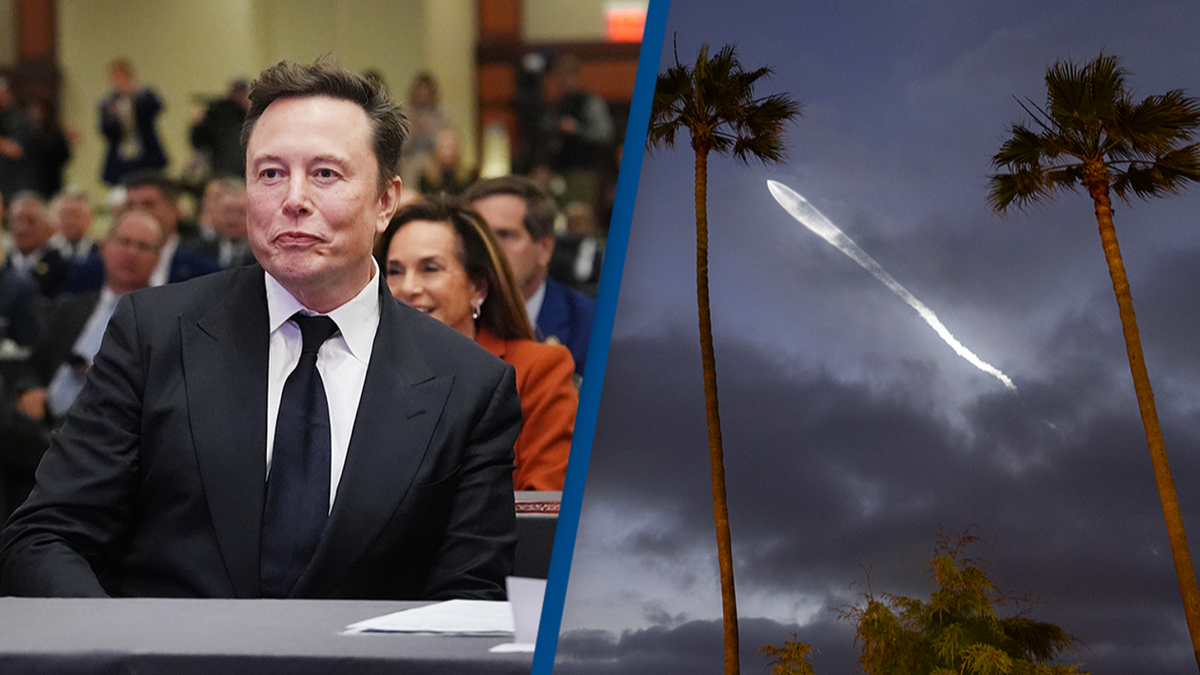
In an extraordinary announcement that has captivated both the scientific community and the general public, Elon Musk and SpaceX have unveiled the creation of the world’s first UFO, set for testing in 2027. This highly anticipated spacecraft promises to change the course of space exploration forever.
For years, humanity has dreamed of interstellar travel and reaching beyond our solar system, and now, with SpaceX’s innovative technology, that dream is one step closer to becoming a reality. The spacecraft, equipped with cutting-edge features, marks a groundbreaking leap in space technology, with the potential to revolutionize the way we explore the cosmos.
The UFO developed by SpaceX is a departure from the traditional design of spacecraft. Unlike conventional space vehicles, which often prioritize function over comfort, the SpaceX UFO takes into account the long-term needs of its crew.
Designed to accommodate up to 4.5 people, this spacecraft is intended for deep space missions that require not only advanced technology but also long-term sustainability. It is not merely a tool for exploration but a mobile habitat capable of supporting life for extended periods.
SpaceX’s engineers have paid close attention to every aspect of the spacecraft’s design. The interior of the UFO is a blend of high-tech gadgets and practical comforts. The crew is provided with a variety of electronic devices to ensure smooth and efficient operations during their journey.

These devices are seamlessly integrated into the ship’s infrastructure, making it easy for astronauts to interact with the spacecraft’s systems. Communication between the crew members and Earth-based mission control is uninterrupted, with advanced satellite links and real-time data monitoring ensuring that the mission is always on track.
While early space missions were often associated with cramped, uncomfortable conditions, the SpaceX UFO challenges this notion. The ship is designed with ample living space, including rest areas that allow the crew to sleep and relax, even in the weightlessness of space.
With long-duration space missions being a key component of future exploration—especially in missions beyond Mars—the crew’s comfort and well-being are of utmost importance. The UFO offers a sophisticated zero-gravity sleeping environment that minimizes the physical stress astronauts face on extended journeys, and the crew quarters have been designed to maximize both rest and productivity.
In addition to providing a comfortable sleeping area, the UFO also features facilities for exercise. As muscle atrophy is a concern for astronauts on extended space flights, the spacecraft includes a specially designed workout area, complete with resistance exercise machines that simulate gravity.
These measures ensure that the crew can maintain their physical health during long space expeditions, a crucial element for missions that last many months or even years.

Beyond just the living space, the UFO also includes a full range of facilities for daily life. The kitchen area, for instance, is designed to prepare food for extended trips, with advanced cooking and food storage technologies that ensure the crew has access to nutritious meals throughout the duration of the mission.
Unlike past space missions that relied on freeze-dried meals, the UFO’s kitchen will allow for a more varied and healthier menu, with options that include fresh ingredients and custom meal plans for astronauts.
One of the most significant challenges for space exploration beyond Earth’s orbit is the ability to sustain life over long periods. In the past, long-duration missions have been limited by the need for frequent resupply missions. However, SpaceX’s UFO has been designed to solve this problem with an innovative food storage system capable of supporting the crew for up to one year without resupply.
This advanced food storage and preservation system makes use of the latest breakthroughs in food science and technology. The spacecraft can store both perishable and non-perishable food items in a way that ensures their freshness and nutritional value for extended periods.
The UFO also includes a water filtration system that provides purified drinking water, further reducing the need for resupply from Earth. The crew will have access to a variety of nutrient-dense meals, including fresh fruits and vegetables, protein-rich options, and custom dietary plans tailored to their individual needs.
By being able to carry a year’s worth of food and water, the UFO eliminates one of the most significant logistical challenges for interstellar travel, making it possible for astronauts to undertake missions that were once thought to be impossible due to the need for regular resupply.

With this technology, SpaceX’s UFO could be the first step toward longer missions to distant destinations, including Mars, the outer planets, or even further.
Perhaps the most ambitious aspect of SpaceX’s UFO is its involvement in testing light-speed travel. For decades, scientists have speculated about the possibility of traveling at or near the speed of light, a feat that would open up incredible opportunities for space exploration.
While this idea has long been relegated to the realm of theoretical physics, SpaceX has taken the bold step of putting this theory to the test in a real-world spacecraft.
The UFO’s propulsion system is designed to explore the limits of speed, with the ultimate goal of reaching speeds that could approach the speed of light. This would revolutionize space travel, making it possible to reach distant stars in a fraction of the time it currently takes with conventional propulsion systems.
The technology behind this ambitious project is still classified, but insiders suggest that it may involve experimental quantum propulsion or advanced manipulation of energy fields to achieve relativistic speeds.
The implications of successful light-speed travel are immense. If the UFO can indeed reach near-light-speed velocities, it would allow humanity to explore the galaxy at unprecedented rates, opening up new possibilities for colonizing distant planets and gathering resources from other star systems.

It would also mark the beginning of true interstellar travel, pushing the boundaries of what was once considered impossible.
While the concept of light-speed travel is still in its early stages, SpaceX is already making significant progress. The spacecraft’s first test flights are set to occur in 2027, with engineers and astronauts closely monitoring its performance and potential. The results of these tests will provide vital data on whether the UFO’s propulsion system can achieve the speeds necessary for deep-space travel.
Given the ambitious nature of this project, success is by no means guaranteed, but SpaceX’s track record of overcoming challenges and pushing the limits of what is possible gives reason to believe that they may be able to achieve what was once thought to be impossible.
If these tests are successful, the implications for space exploration will be profound. SpaceX has already changed the landscape of space travel with its reusable rockets and commercial spaceflights, but a successful light-speed spacecraft would push the boundaries of exploration even further.
It would lay the foundation for a new era of space exploration, one where humanity is no longer limited by the vast distances between stars but is free to venture out into the universe at unprecedented speeds.

The creation of SpaceX’s UFO represents a monumental step forward in humanity’s quest to explore the stars. With its ability to house a crew for extended missions, its advanced life-support systems, and the potential for light-speed travel, this spacecraft has the potential to redefine what is possible in space exploration.
While the technology is still in its infancy, the success of this project would open up a new frontier for humanity, one where the impossible becomes reality.
As we look toward the future, SpaceX’s UFO represents not just a leap in technological innovation, but a glimpse into the future of human space travel. Whether or not it achieves light-speed travel remains to be seen, but the fact that it is even being attempted is a testament to the incredible potential of human ingenuity. With Elon Musk and SpaceX at the helm, the stars may soon be within our reach.




